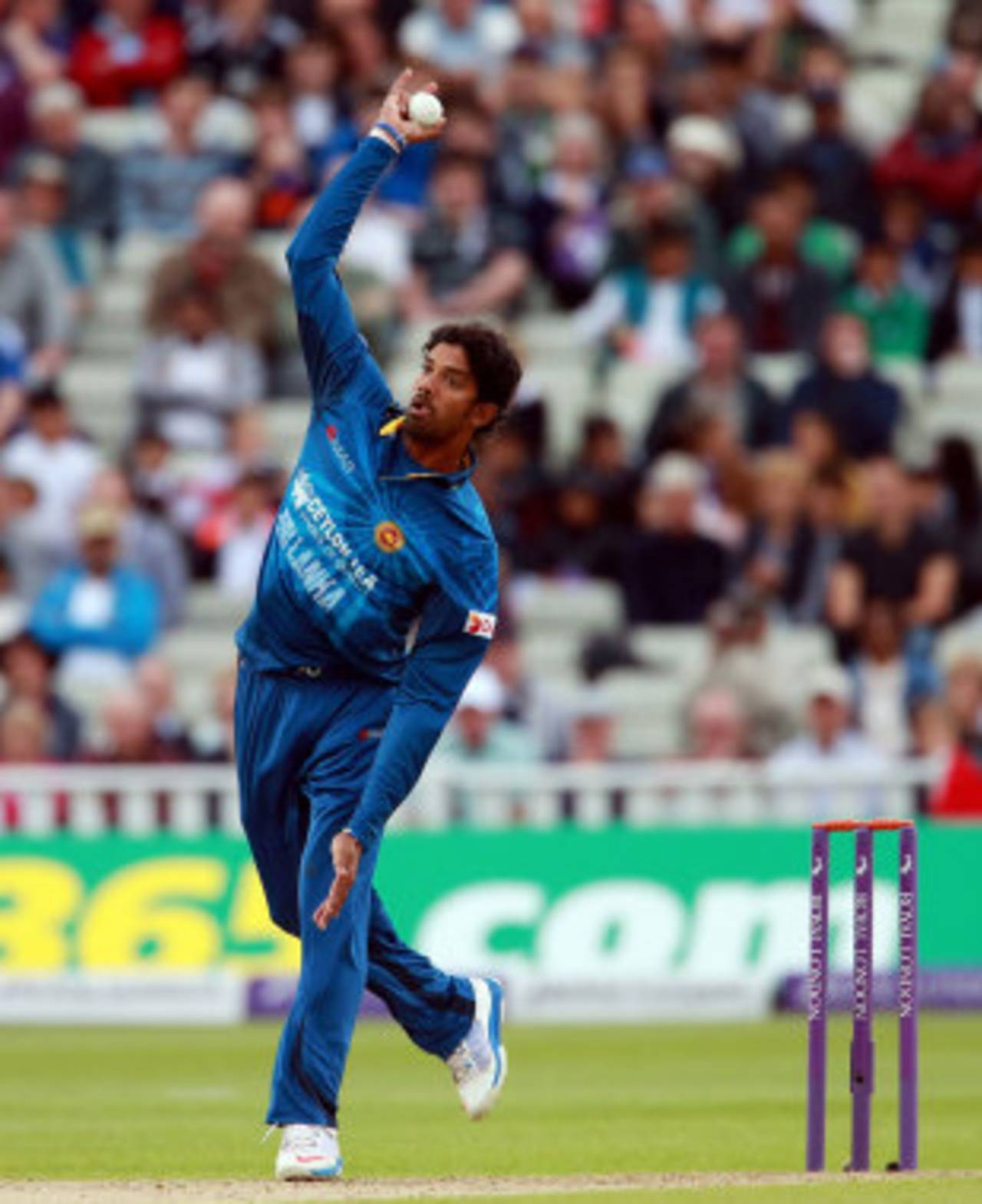Sri Lanka Cricket's drive to eradicate chucking from its system has gained momentum, with umpires and school coaches contributing to the cause immensely.
SLC began their crusade by appointing former international umpire
Tyron Wijewardene as their umpires' educator in April, after Wijewardene had completed an ICC Coach the Coaches course in Nagpur. Wijewardene had officiated in four Tests, 52 ODIs and seven T20Is between 2001 and 2013.
"Before the program was put in place, certain school coaches allowed bowlers to bowl as they pleased because they somehow wanted to win matches, even though they knew for certain that their actions were questionable," Wijewardene explained. "But since we gave the green light to the umpires, there has been a severe awareness and all coaches know if there is a bowler with a suspect action, the umpires are going to report him."
When the program began, SLC reported around 25 bowlers with suspect actions in the Under-23 tournament. But after the board expanded their scope to more schools, namely in the Under-13, 15, 17 and 19 age groups, that figure has risen to more than 110.
Wijewardene attributes this increase to the school coaches being made aware that unless they made an effort to correct the bowler's suspect action, he could be reported or called at a match by the umpire and prevented from bowling.
"Now there is a severe awareness program where even the coaches know what's happening. They are worried about their bowlers and sometimes they call the district coaches to come and have a look at their bowlers. There is a positive response from the school coaches who also feel that this menace has to be eradicated."
Wijewardene cited an example where at an Under-13 tournament school match, six bowlers from a Colombo school were stopped from bowling by the umpire for chucking. As the school had no other bowlers to complete the scheduled number of overs - two bowlers had already completed their quota and the others could not bowl - the umpires had no option but to abandon the match. The most number of bowlers reported or called for chucking at a match prior to that incident was two from one school.
Wijewardene said that the SLC took a serious view of eradicating chuckers from domestic and school cricket after Sri Lanka offspinner Sachithra Senanayake was reported by ICC officials during the team's tour of England in May.
"When one of our bowlers is reported internationally, it's bad for our country," he said. "It spurred SLC to curb down on suspect bowlers to ensure it won't happen again in the future. Internationally this has become an issue so we thought we should do something.
"Hashan Tillakaratne, now a national selector, told me that there were several bowlers with suspect actions bowling in school matches but the umpires were not doing anything. Since we gave the greenlight to the umpires, they are doing their job properly from Under-13 level upwards at all school and club tournaments played in Sri Lanka."
To create the awareness, Wijewardene and officials from the Sri Lanka Schools Cricket Association (SLSCA) are going around the country to educate the coaches and masters-in-charge about the issue and the protocol that is to be followed should a bowler with a suspect action be identified.
"Once a bowler is reported at school level, he can continue to play in the match but at the end of it the umpire has to hand over a copy of the suspect bowler's action report to the master in charge or the coach of the school, and he should also get a second copy signed by the school master-in-charge or coach acknowledging receipt of the report. The report is then scanned and mailed to me. I will send it to the coaching department.
"As there are too many matches in the Under-13 age group played around the country it is too much of a burden. As soon as I get the mailed report I refer it to the coaching department and the report is mailed to the respective district coach from where the school comes from, to check on the bowling."
Overall, there are 35 district coaches involved who are overlooking schools covering the entire country.
"The program which is being conducted on a two-year trial basis has gone 100% and in a positive way," Wijewardene said. "The positive aspect is that the coaches have taken it upon themselves the importance of remedying the actions of such bowlers. It's a very good response from them and it is encouraging to note that they have taken a very serious view of it. We want to ensure that within the next two-three years, chuckers will be eradicated from our system."
